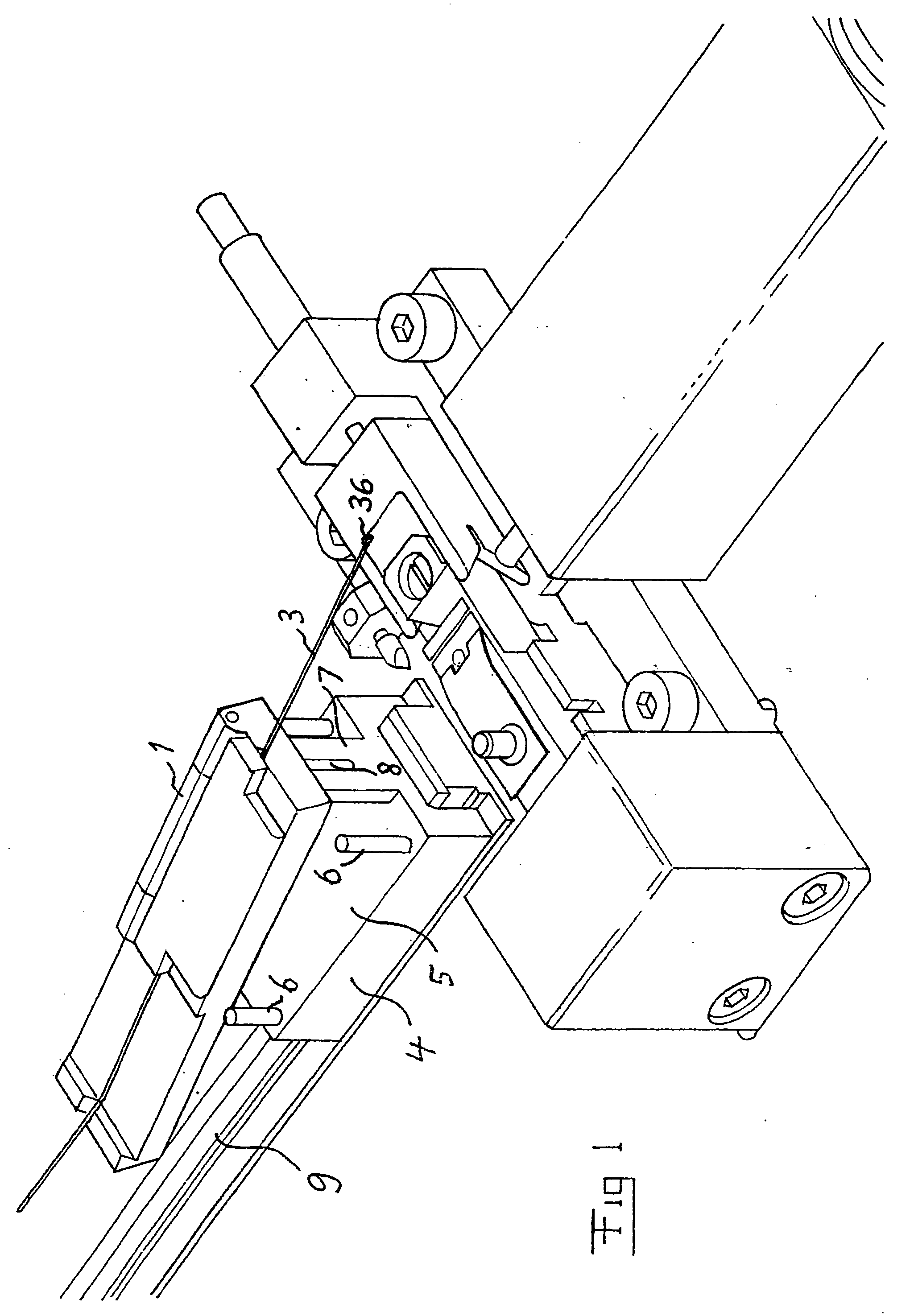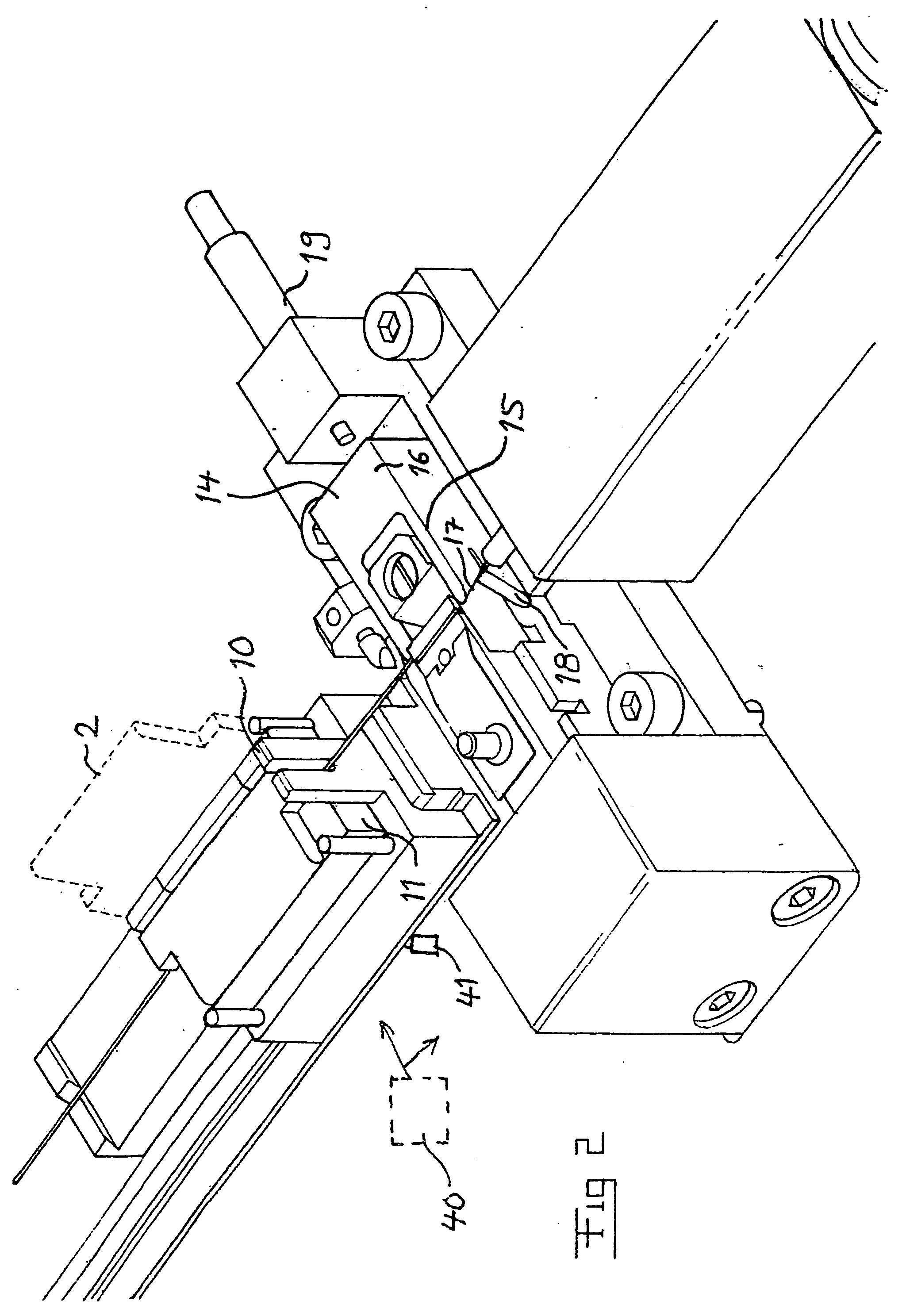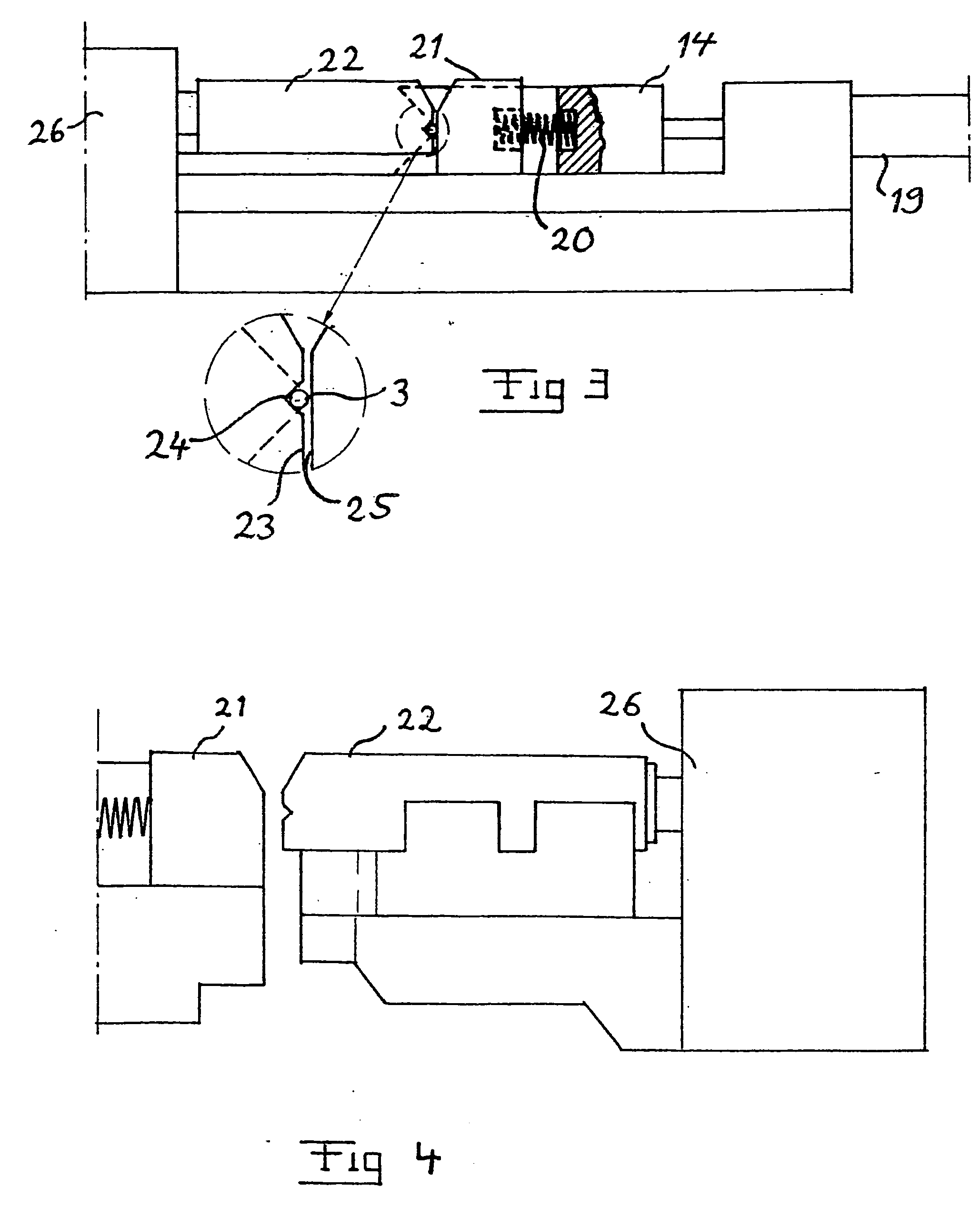Arrangement and a mehtod for clamping thin rods
a technology of arrangement and clamping rod, which is applied in the direction of large fixed members, instruments, vices, etc., can solve the problems of reducing the efficiency of the apparatus, requiring a considerable amount of removal, and requiring substantial amount of work, so as to reduce the risk of applying torsional stress and improve the efficiency of the arrangement
- Summary
- Abstract
- Description
- Claims
- Application Information
AI Technical Summary
Benefits of technology
Problems solved by technology
Method used
Image
Examples
Embodiment Construction
[0031]FIG. 1 illustrates an apparatus for cleaving thin rods of glass or quartz, preferably optical fibres, having a diameter below 1 mm, and preferably in the range of 50 μm-200 μm. The optical fibre is clamped in a second clamping means 1 in the form of a conventional fibre holder used for holding a fibre also when joining two optical fibres, and this is already known. It is schematically illustrated in FIG. 2 by dashed lines how a lid 2 of said clamping means may be pivoted for opening and closing this clamping means. This clamping means 1 is adapted to hold the fibre to be cleaved with a part 3 on which the cleaving is to be carried out projecting out from the fibre holder.
[0032] The apparatus also comprises a member 4 adapted to receive the fibre holder 1 therein for holding it in a well-defined position during the cleaving sequence. The receiving member 4 has the character of a carriage with a bottom 5 onto which the fibre holder is intended to rest and guiding members 6 in t...
PUM
| Property | Measurement | Unit |
|---|---|---|
| Length | aaaaa | aaaaa |
| Diameter | aaaaa | aaaaa |
| Diameter | aaaaa | aaaaa |
Abstract
Description
Claims
Application Information
 Login to View More
Login to View More - R&D
- Intellectual Property
- Life Sciences
- Materials
- Tech Scout
- Unparalleled Data Quality
- Higher Quality Content
- 60% Fewer Hallucinations
Browse by: Latest US Patents, China's latest patents, Technical Efficacy Thesaurus, Application Domain, Technology Topic, Popular Technical Reports.
© 2025 PatSnap. All rights reserved.Legal|Privacy policy|Modern Slavery Act Transparency Statement|Sitemap|About US| Contact US: help@patsnap.com



